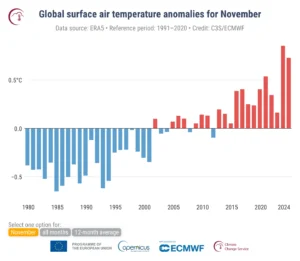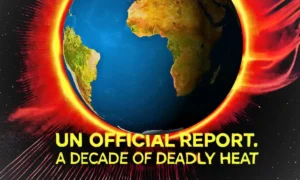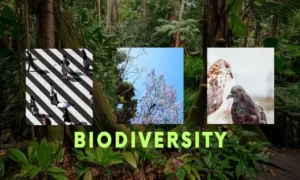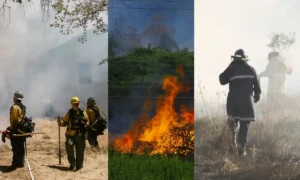Saudi Desertification Crisis and Shocking Simple Solution Fighting It
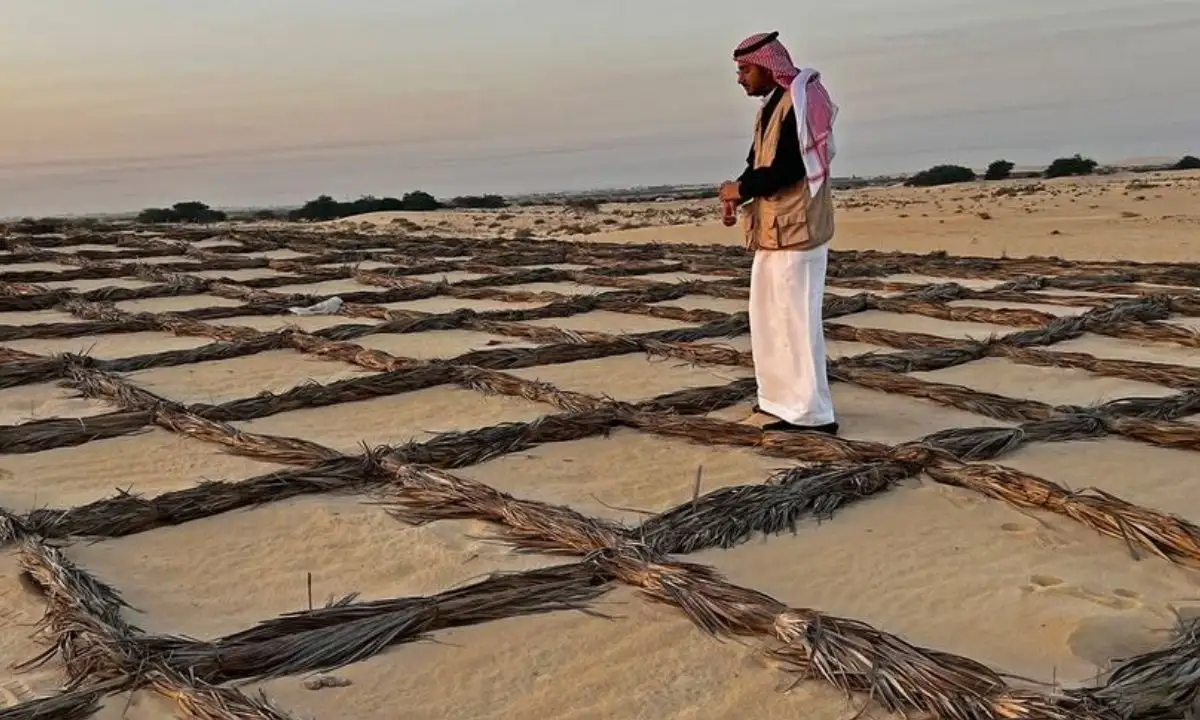
The Al Ahsa oasis in eastern Saudi Arabia is under threat from advancing desert sands. Sand dunes as high as 15 meters have “inundated” nine nearby villages.
A UN News report highlights a sustainable, low-cost solution to fight desertification in Saudi Arabia’s eastern regions. The inexpensive approach to slow down the pace of desertification in the Gulf state is developed in collaboration with the UN’s Food and Agriculture Organization (FAO) and the local communities.
The solution is low-cost as it uses palm fronds to create sand barriers. Saudi Arabia has an abundance of palm fronds. It is home to millions of date palm trees. These are the best suited plants for the region’s hot and arid climate. The country is one of the world’s largest producers of dates in the world. It is well-known that dates are a big part of Saudi Arabia’s agricultural economy and culture.
The barriers are arranged in patterns like checkerboards or straight lines. They can help slow down sand movement and reduce its impact on nearby areas and farms.
Mona Dawelbait from FAO explains, “The palm barriers will not fully prevent the wind from moving sand towards land you want to protect, but it does slow the speed and completely change the flow of the sand.”
This method also encourages the growth of plants and trees. It creates better conditions for farming and prevents the loss of valuable land.
Using palm fronds is also good for the environment. Instead of burning them and releasing harmful gases, they are repurposed to fight desertification.
Also Read | TCC’s Latest Report Reveals Shocking Asian Monsoon Trends for 2024
FAO is also using advanced weather stations to track sand movements. These stations study wind patterns, humidity, and temperature. This data helps predict sand movement and protect farmland before it is affected.
The project relies on local communities to build and maintain the sand barriers. FAO partnered with the Green Environment Society to protect Al Ahsa National Park which is managed by the government.
Dawelbait says, “This approach not only ensures local sustainability but also promotes community involvement in environmental conservation efforts.”
Climate change is worsening desertification in Saudi Arabia. But projects like this offer hope. Dawelbait believes the work will continue.
“I have worked with desert communities for 20 years. They are resilient people with strong spirits.”
This simple and sustainable solution is already making a difference. It shows how local action and innovative ideas can help reduce the impacts of big challenges like desertification.
It is worth noting that COP16 of the UN Convention to Combat Desertification, held in Riyadh at the start of this month and ran for nearly two weeks, ended without a binding drought agreement.

